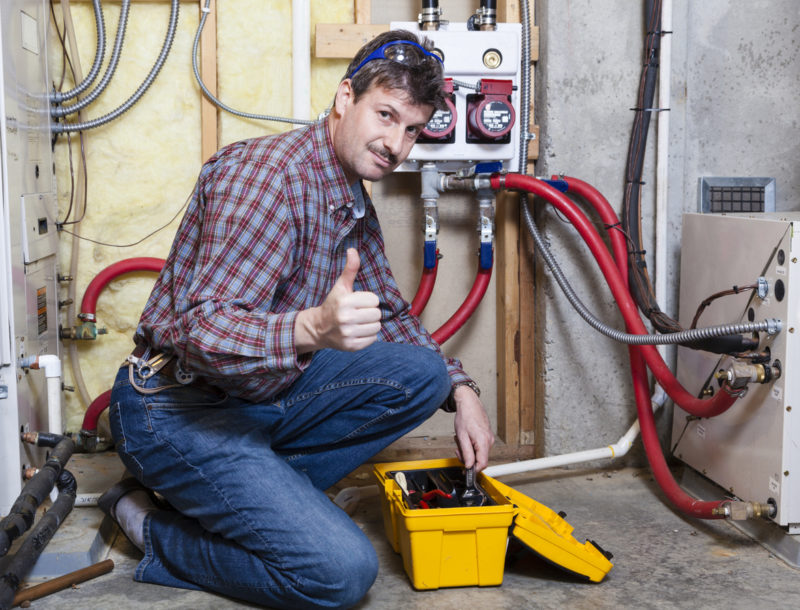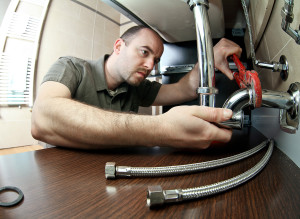This post in the next paragraphs on the subject of DIY vs. Professional Plumbing Repairs: When to Call a Pro is immensely enjoyable. Try it and make your own personal assumptions.

Intro
Pipes issues can range from small aggravations to significant frustrations, frequently motivating house owners to decide in between tackling the issue themselves or calling a specialist plumbing technician. Knowing when to DIY and when to seek specialist help can save time, cash, and avoid possible disasters. This post checks out the aspects to think about when making this important choice.
Benefits of Do It Yourself Plumbing
Tackling pipes tasks on your own can be fulfilling in several ways, particularly for simpler jobs.
Intricacy of Jobs
Some pipes problems call for specialized understanding and tools beyond common home owner abilities. Mishandling intricate issues can lead to more damage and costly repair services.
Security Problems
Dealing with plumbing systems includes dangers such as direct exposure to water damages, possibility for electric hazards, and taking care of devices incorrectly. Safety and security preventative measures must be observed to avoid accidents and guarantee effective repairs.
Indicators to Call a Specialist Plumbing
Recognizing when a pipes problem goes beyond do it yourself capacities is critical to avoid worsening troubles.
Indications of Complicated Issues
Instances include:
Prompt expert treatment is needed to address these issues properly and lessen damage.
Do It Yourself Pipes Tips
For effective DIY pipes, it's essential to be prepared with the right tools and adhere to appropriate procedures.
Standard Tools and Materials
Trick tools for do it yourself plumbing:
Step-by-Step Guides
Clear guidelines ensure safe and efficient do it yourself repairs:
Choosing the Right Time to Do It Yourself
Establishing when to tackle plumbing tasks on your own requires analyzing both the complexity of the issue and personal convenience levels.
Analysis List
Consider:
Cost Cost savings
DIY plumbing jobs commonly save money by preventing specialist service fees. Jobs like taking care of small leaks, replacing taps, or installing brand-new showerheads are examples where house owners can deal with repair work without hiring a plumbing professional.
Ability Improvement
Engaging in do it yourself pipes uses a possibility to learn and improve useful skills. Fundamental tasks encourage property owners to recognize their pipes systems far better and get confidence in handling small repairs individually.
Threats of Do It Yourself Plumbing
While DIY tasks use benefits, particular dangers must be very carefully taken into consideration prior to attempting repair work.
When to Certainly Call a Professional
Specific situations require immediate skilled focus to avoid considerable damage or safety dangers.
Emergency Situations
Instances consist of:
Searching for and Employing a Specialist Plumber
Choosing a qualified plumbing makes sure dependable solution and satisfaction in fixing plumbing issues.
Criteria for Option
Elements to think about:
Expense Evaluation: DIY vs. Expert Providers
Comparing the monetary implications of DIY initiatives versus specialist pipes solutions helps in making informed decisions.
Financial Considerations
Examine:
Verdict
Choosing whether to DIY or call a professional plumbing hinges on recognizing the intricacy of plumbing issues and individual abilities. By weighing the benefits and threats, home owners can make educated options that promote effective maintenance and guard their homes from plumbing calamities.
When to DIY and when to call a professional plumber
There are Australian laws and regulations that regulate plumbing work in Australia. This means that there are few home plumbing tasks that you can DIY. Besides, a lot can go wrong with DIY plumbing projects. However, there are also plumbing works that you can successfully DIY. Read on to know when to DIY and when to call a professional plumber.
You can learn more about the risks of DIY plumbing projects, projects requiring special caution, and illegal DIY plumbing works to avoid. This post concludes with the services of commercial plumbers and why getting expert help is essential.
Reasons to Attempt DIY Plumbing Projects
While it is often not advisable to perform DIY plumbing repairs, several pros of DIY plumbing projects can make them attractive.
Save costs
A significant reason for doing DIY plumbing jobs is to save costs. It is possible to save on labour charges and overall fees if you buy the needed tools and parts from local hardware stores and do the repairs yourself.
Gaining experience
You can gain some hands-on experience in basic plumbing repair if you watch online videos and attempt the repairs yourself.
Confidence boosting
You can boost your confidence and self-reliance skills by performing DIY plumbing repairs and installations yourself.
Risks of DIY Plumbing Projects
If something goes wrong with your DIY plumbing project, you may have unfavourable results that you may consider the cons of DIY plumbing.
For one, your home may get so extensively water-damaged that your home and contents insurance will not cover you. You will also have to spend more money to repair the water or sewage problem than you would otherwise spend for professional plumbing jobs. Besides, you may often spend more time on DIY plumbing work than an experienced plumber would spend. This is because you may not have the needed skill set. There are also related safety hazards and potential threats of DIY plumbing jobs that you may need to consider. Plumbing Issues You Can Fix Yourself
You can attempt DIY plumbing for plumbing issues such as replacing tap washers, installing shower heads or performing minor tap leak repairs. However, it would help if you invited licensed plumbers to fix complex leaking showers, effectively deal with blocked drains, or repair hot water systems. This is the best way to ensure these plumbing issues are correctly fixed, and the project is insured.
Fixing clogged or blocked drains
You may have clogged drains or need help with slow-draining showers. These are tasks that you can resolve yourself using several options. To fix blocked drains, you may use baking soda, plungers, or wire hangers. Meanwhile, you can take the preventive measure of installing filtration systems such as drain filters to help prevent drain clogs.
New faucet installations
It is possible to install a new faucet yourself. You would have to turn off the hot and cold water valves. Then, you can remove and fix the old faucet and replace it with the new one.
Leaky faucet repairs
While leaky faucet repairs are more technical than installations, you can also take some steps to fix them. Turning off water valves is the first step in draining water from plumbing systems. Next, you can use a washcloth to cover the drain and remove the decorative handles.
This will allow enough room to unscrew the nuts that attach the faucet handle to the stem. Your final step is to take out and replace the old washers and O-rings with the new duplicates.
Fixing running toilets
An occasional DIY solution for running toilets is to restore the flapper in the tank to its proper place.
Burst pipes
You may have issues with your exterior plumbing fixtures. It may simply be that your inbound or outbound pipes have worn out, or you may have burst pipes due to flooding or large tree roots.
You may also have frozen pipes. These are all instances when you need to call a professional plumber. They will perform pipe inspections to locate the problem and implement solutions such as pipe relining.
Interior plumbing repairs
It's usually time to call a competent plumber if you want to do plumbing repair work on floors, ceilings, or the walls of your building. They can also help you fix faulty showers and sinks.
Plumbing renovation
Major renovation projects or plumbing jobs such as bathroom remodelling and bathroom renovations require the services of a professional plumber. Likewise, you need a professional plumber to fix your kitchen sink or plumbing. They can help you get the required plumbing permits. At the same time, they know what building codes apply to such renovation projects.

As a fervent reader about When to Call a Plumber? DIY or Professional Help, I thought sharing that piece of content was a great idea. Appreciated our blog entry? Please share it. Help others check it out. We treasure reading our article about DIY vs. Professional Plumbing Repairs: When to Call a Pro.
Call Today